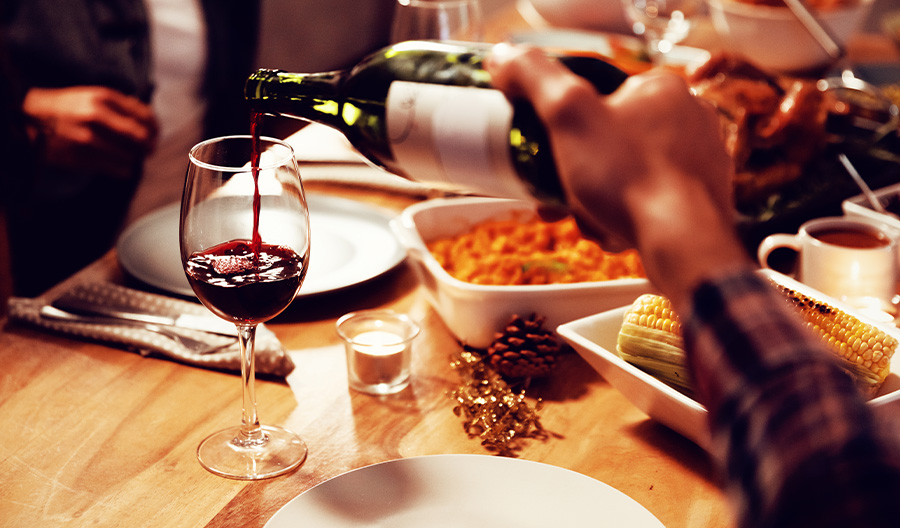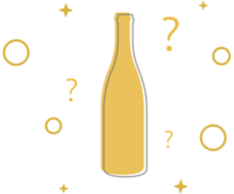If we’re to believe the headlines, Gen Z—a.k.a. those born between 1996 and 2012, spells doom for the wine industry. They’re health-conscious, sober-curious and not that interested in spending money on alcohol, according to the latest “State of the U.S. Wine Industry” report. The San Francisco Chronicle says that Gen Z-ers think of wine as 2024’s cigarette, while Fast Company says young drinkers are opting for hard seltzers, low-abv beverages, marijuana and non-alcoholic products over wine. The future sounds grim.
So what are the new guard of drinkers excited about? Below, we unpack the trends defining Gen Z wine culture—and suggest bottles indicative of them.
Embracing—Not Just Acknowledging—Sustainable Practices
This generation is watching the devastating effects of climate change unfold in real time, so it’s understandable that sustainability is important to 75% of them. They care more about environmental practices than brand names.
“In our wine club, climate conversation has been a huge topic, from seminars we’re hosting to questions we’re getting from our students,” says Quinn Bader, an MBA candidate at UCLA Anderson School of Management and the president of the school’s wine club.
“My peers focus on what goes into the product, whether it’s the farming, packaging or sustainability measures,” explains the assistant winemaker at a winery in Sonoma. “These are values we don’t mind paying for.”
But sustainability needs to be more than a slogan. “My generation isn’t just impressed with sustainability—we expect it,” says the founder of an online wine shop. “Whenever we see companies unveil socially responsible taglines as this big ‘tada’—we think, okay, do you want a reward for doing what’s right?”

Exploring New Regions
Carlos Rones, a former sommelier says that his Gen Z friends are all inquisitive and excited to try new things, wine included.
“They’re adventurous,” Rones says. “This should be exciting to our industry.” He’s seeing growth in interest in international regions—Portugal, Spain and New Zealand especially. Gen Z came of age in an economically tight time, Rones notes, and while a plane ticket might not be accessible, a bottle of wine from a dream destination might be.
In UCLA’s wine club, Bader notices that smaller producers and bottles from non-traditional locales get a lot of attention. “There’s a huge interest in trying wines from Scandinavia to China to Japan,” he says. “I think a spell has been broken with our generation. We no longer believe good wine can only come from France, Spain, Italy and Northern California. Shared knowledge about winemaking techniques and shifting climates are giving us the opportunity to try amazing wines from all over the world.”
Welcoming New Styles
Gen Z’s hunger for new experiences also extends to styles of wine. Among them? Orange wines, co-ferments and chilled bottles. The winery that is running with this trend recently introduced a chilled red and an unfiltered white to the brand’s portfolio. Both took off.
At the UCLA wine club, Bader has also seen an uptick in chilled reds, specifically Central Coast Pinot Noirs that thrive in cooler temperatures.
Drinking Digitally
For a generation that grew up chronically online, connecting on social platforms is crucial.
This is especially true when it comes to discovering new wines. Erica Duecy, the cofounder of the Business of Drinks podcast, dedicated an entire season of her show to better understanding Gen Z and young millennial drinkers. She learned that more than 40% of millennial and Gen Z consumers rely on recommendations from friends and family to help them find and buy wine, followed by social media (30%) then wine publications (13%) and wine reviews and ratings from experts (between 11 and 18%). But meeting Gen Z where they are online isn’t a one-size-fits-all approach.
So many brands have difficulties using social media platforms in ways that add value. The key is that your brand and messaging need to be authentic.
Wine as a Connector
Gen Z’s drinking habits were formed in unprecedented conditions, and this has affected the way they view wine culture. The oldest members of the generation turned 21 mid-pandemic. While previous generations ushered in the milestone with hard partying (and hangovers), many Gen Z-ers came of age in an era of social distancing. Many cross-generational interactions and other experiences were lost that shape the way people learn how to drink. Life as we knew it paused and there’s now a large lag to catch up.
At present, many Gen Z-ers drink less, but more consciously. They’re curious about how wine can bring people closer together. “I find that in our wine club nights, people are focused less on learning about wine to be an amateur sommelier or impress our bosses,” Bader says. “It’s about wine as a vessel for unique cultural experiences. I don’t think that our generation is losing interest in wine, I just think we’re more focused on social and cultural connections.”
Embracing Pacing
Drinking is down across all demographics, with volume sales for wine declining in the U.S. for the third year in a row. Over the last two years, the World Health Organization has been on a mission to curb alcohol consumption, arguing that no amount of alcohol is safe. This is also affecting how Gen Z approaches wine.
One winery marketer is reaching her peers by advertising her family’s wines as a low-abv cocktail ingredient. It’s an unconventional approach in many conventional wine circles. “Cocktails remain popular,” she says. “Why not use rosé, red, sparkling and orange wines to offer lighter alternatives to traditional cocktails?”
In October, the Business of Drinks podcast commissioned a survey, in partnership with strategy consultancy Research & Marketing Strategies, to better understand how consumption habits. It found that 64% of respondents are moderating their alcohol intake. That figure is even higher for younger audiences: 70% for millennials and 75% for Gen Z. The results found millennials still choose wine as their top choice to bring to a dinner party, but Gen Z-ers choose soda. At a house party? Both generations show up with hard seltzer and beer.
Younger drinkers want products that fit into their lifestyles, whether that’s going to the beach or a house party. It sounds like a simple conclusion, but it’s one that reflects the reality that as lifestyles change, how wine intersects with it will evolve, too.

